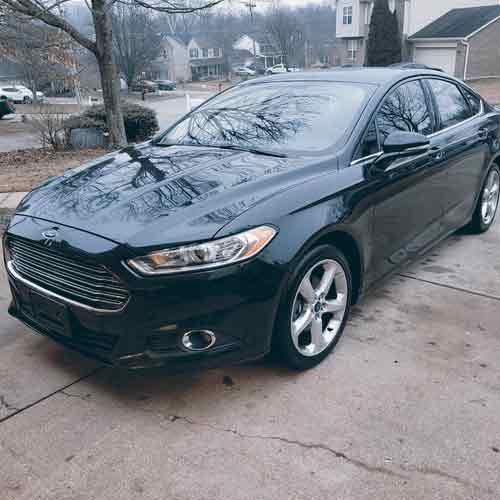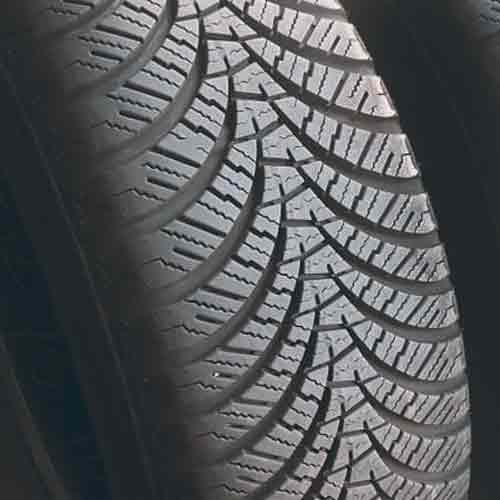The Falken EuroAll Season AS210 and the Nokian SeasonProof excel in the grand touring all-weather tire category, offering distinct advantages in terms of performance, handling, and comfort. Let’s explore if they really align with your needs, or not.

Table of Contents
Main Highlights
So overall, the EuroAll Season AS210 excels in:
- Dry performance, with superior linear grip and handling.
- Faster stopping capability, especially notable in dry conditions.
- Quicker steering response and effective braking, contributing to faster cornering.
- Value for money, offering affordability.
Detailed Review of Falken Tire: https://tiredriver.com/falken-euroall-season-as210-review/
Whereas the SeasonProof excels in:
- Wet performance, particularly in hydroplaning resistance and wet traction.
- Winter performance. It’s actually the best tire according to my tests (in its category, I mean).
- Ride Comfort, providing superior impact and noise comfort performance.
Detailed Review of Nokian Tire: https://tiredriver.com/detailed-review-of-nokian-seasonproof/
Construction Features
The Falken EuroAll Season AS210 offers a slick directional pattern with curving V-shaped lugs.

These lugs feature prominent lateral voids near the shoulders, which narrow down towards the middle.
This design enhances grip by ensuring consistent rubber-to-road contact, especially from the central area, enhancing dry (linear) grip.
In other words, it allows the tire to brake faster, on dry asphalts.
And for improved wet grip, the tire is equipped with abundant interlocking siping.
These sipes are deep but don’t go all the way to the tread base.
Alongside these, you’ll notice zigzag biters or notches (running parallel to the sipes) that slice through the lugs, linking lateral channels.
Thanks to the inter-connectivity of these lateral, swooping voids, the tire excels in water dispersal.
Switching over to the Nokian SeasonProof, it steps up with a more aggressive pattern.

Its lugs carve out sharply curved channels on the sides.
Near the shoulders, these lugs are reinforced (you can even see the secondary rubber layer underneath its lugs, in the image).
This structure not only aids in hydroplaning resistance and water evacuation but also maintains the tread’s integrity for reliable handling.
Moreover, the lugs come armed with more aggressive zigzag, serrated edges known as snow vices, and notches that oppose the direction of the arrow-like lugs, enhancing tire’s winter traction, for the most part.
And same goes for sipes as well, though their more aggressive pattern provides superior wet traction too.
In its internal construction, the Nokian comprises a 2 ply polyester casing with dual steel belts and a single nylon cap ply, adding to its robustness and durability.
Available Tire Sizes
Nokian SeasonProof comes in 63 total sizes in 14 to 19 inches rims, and they have the following specs.
- Speed ratings: T, H, V, W and Y (with Y being the maximum, you can get, usually seen on high performance touring tires).
- Load ratings: SL/XL, (though majority of sizes are XL).
- Weight range: 19 to 32 lbs (relatively heavier compared to most of its grand touring competitors).
- Tread depth: 10/32″ on most (some also have 9/32″).
The Falken EuroAll Season AS210 comes in 104 sizes in 13 to 20 inches, with:
- Speed ratings: T, H, V and W.
- Load ratings: SL and XL.
- Weight range: 16 to 33 lbs.
- Tread depth: 10/32″ on all.
- UTQG: 540 A A.
- Treadwear warranty: None for now.
Overall Dry Performance
When it comes to a tire’s performance in dry conditions, it’s really about how well it grips (both straight-line and side-to-side) and how it handles corners. Let’s dive deeper into each aspect.
Linear Grip
Its the tire’s straight line grip, which gets measured by braking, and is primarily influenced by several critical factors: the design of the tread, the extent of rubber contact with the road, the tire’s overall weight, and its rolling resistance.
All these factors point towards superior performance of the EuroAll Season AS210.
I mean although both tires here showcase aerodynamic, directional patterns and utilize soft rubber compounds to maximize traction, the Falken still takes the lead primarily due to its lighter weight and a relatively less voided up tread pattern.
The tire’s reduced weigh keeps the momentum low, enabling faster stopping capabilities. Additionally, its tread design offers an optimal balance of rubber and voids, significantly improving grip.
That’s why in head-to-head tests, the Falken AS210 was able to stop over 9 feet shorter than the Nokian when decelerating from 60 mph, highlighting SeasonProof’s most lacking performance aspect (when it comes to dry performance).
Overall Handling
The Nokian tire displays marginally better overall handling, somewhat compensating for its notably weaker braking performance.
However, this advantage isn’t sufficient to surpass its competitor in terms of overall performance.
In tests measuring dry handling lap times, the EuroAll Season AS210 consistently outperforms the SeasonProof, with an average lead of half a second.
This superior performance of the Falken tire is attributed to its quicker steering response and more effective braking, which allow for faster cornering.
Why? Well this is mainly attributed to its lighter weight and the use of a harder rubber compound. Both of these elements keeps its lugs from bending too much.
Which means they take less time to get back in shape (once the has done cornering), significantly reducing the time it takes for the tire to respond to steering inputs.
A Side Note Here: Find the ideal all-season tire by starting with my comprehensive resources on the main all-season tire page.
Wet Performance
Wet performance depends on how well a tire can steer and grip, and its capacity to avoid hydroplaning. Let’s examine each of these components in detail.
Hydroplaning Resistance
Quick water dispersion is essential in wet driving conditions to maintain tire performance and it hold very true when it comes to hydroplaning.
Basically water can not be compressed, so it has to be moved out in time, otherwise it could lead to the floating (or hydroplaning) of the tire.
Now to handle this, tires need effective grooves which is usually the case with directional tires, like these over here.
I mean, both tires here with their V shaped grooves provide pretty decent performance, channeling out water particularly from the middle towards shoulders and eventually out of the tire, effectively.
However, upon a detailed analysis, the Nokian Seasonproof still edges out a little bit, showcasing slightly better overall performance, thanks to its relatively more spacious (and better interconnected) groove structure, taking out more water comparatively.
Wet Traction
So overall wet traction is seen better on Nokian tire. This is because with superior hydroplaning resistance, the tire effectively channels more water through its grooves, leaving behind less for sipes to deal with.
Why that’s important? Well, because sipes do cleaning on their own. They although may seem as mere small slits on the tread, they are actually designed to absorb any remaining water not expelled by the grooves.
Here’s how they actually work: When the tire presses against the road, these sipes expand, creating a vacuum that sucks up residual water, similar to giving the road a quick, tight hug to maintain optimal contact.
In contrast, the Falken EuroAll Season lacks mainly because of its tread featuring less effective sipes which tends to become stiffer (particularly with extreme cornering). This rigidity basically diminishes sipes’ water absorbing abilities.
Consequently, on average, the Falken tire takes almost half a second longer to complete (wet) laps (as seen form my handling tests). But yes, it does offer better braking, I can tell you that. How much better? Well more than 8 feet on average on my multiple 50 to 0 mph stopping tests.
Yes you guessed it right, Nokian SeasonProof’s lacking directional grip is not just limited to dry conditions.
Value Comparison
Evaluating tire value involves considering three critical factors.
- Firstly, the upfront cost is of course the main one.
- Secondly, the tire’s fuel efficiency and longevity play a crucial role in determining its “overall value over time”.
- And the last point comes down to overall performance of the tire, across various conditions.
In this context, the Falken EuroAll Season AS210 emerges as an outstanding choice, delivering remarkable value for its cost. In fact I rated this tire as the best budget pick among the top grand touring tires.
The distinguishing feature of this tire is not only its affordability but also its exceptional durability, often exceeding the 50,000-mile mark.
This endurance is particularly impressive, given its an all-weather tire, coming with 3PMSF (Three-Peak Mountain Snowflake) certification. I mean they usually don’t last that long.
So what makes it last a good amount of time? Well simply put, the tire is crafted with a special rubber compound that is just more resistant to wear. Its formulation, being slightly firmer, may marginally affect its performance in winter conditions, but it’s a strategic trade-off for increased longevity.
Additionally, it offers low rolling resistance, which translates to improved fuel efficiency.
And in terms of performance, although the tire could do better on snow and ice, its still pretty appreciable in dry and wet conditions.
Winter Performance
In terms of winter performance, my extensive testing and analysis have shown that the Nokian SeasonProof is not just a better tire compared to the Falken EuroAll, but in fact, it is the best winter performer among all-weather tires available (currently).
This tire achieves 8 feet shorter braking distances on ice, accelerates a whole second faster in snow, and maintains an average speed nearly 3 mph higher on courses that combine slush, ice, and snow.
A significant factor in this exceptional performance is the tire’s snow-optimized, wider siping slits, which are remarkably efficient at basically capturing snow particles and creating snow-to-snow contact.
This type of contact is very crucial and highly needed here. Why? Well, because snow adheres more effectively to itself than to rubber.
Moreover, the SeasonProof’s rubber composition is also uniquely formulated to remain relatively more flexible even in freezing temperatures. This adaptability is a key contributor to its enhanced performance on icy surfaces.
Wrapping Up
As we conclude, it becomes clear that selecting an overall better tire is complex, with each leading in different performance areas.
The Falken AS210 exhibits superior performance in dry conditions, notably in terms of linear grip and handling. Its lighter weight and tread design contribute to faster stopping and better cornering, evidenced by shorter stopping distances and quicker lap times.
In wet conditions, however, the SeasonProof outperforms, particularly in hydroplaning resistance and wet traction, due to its effective groove structure and sipes.
When considering value, the EuroAll AS210 stands out for its affordability, durability, and fuel efficiency, making it an excellent budget option despite its slightly lesser performance in winter conditions.
On the other hand, the Nokian tire excels in winter performance, offering significantly better capabilities in snow and ice, attributed to its specialized siping and flexible rubber composition.